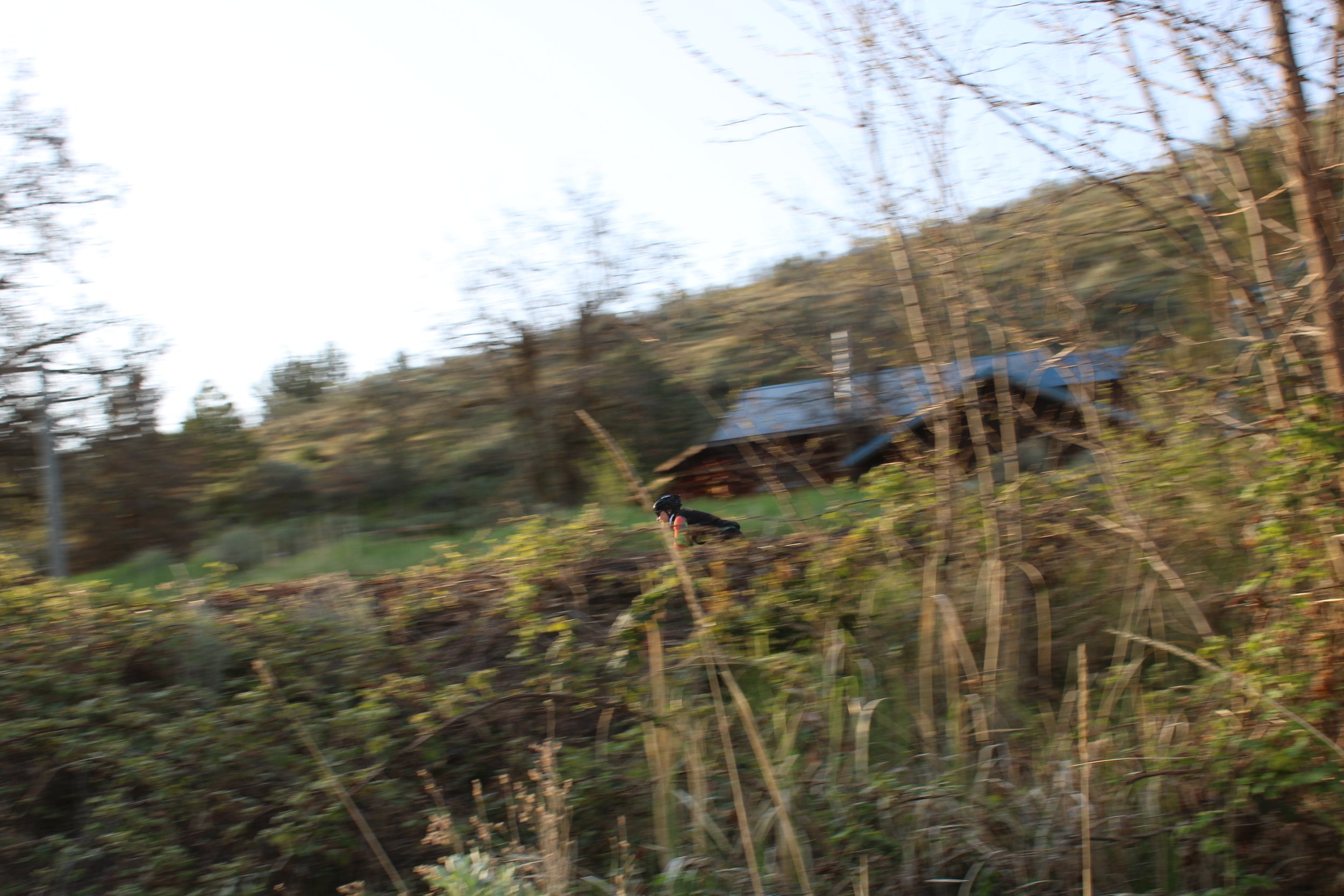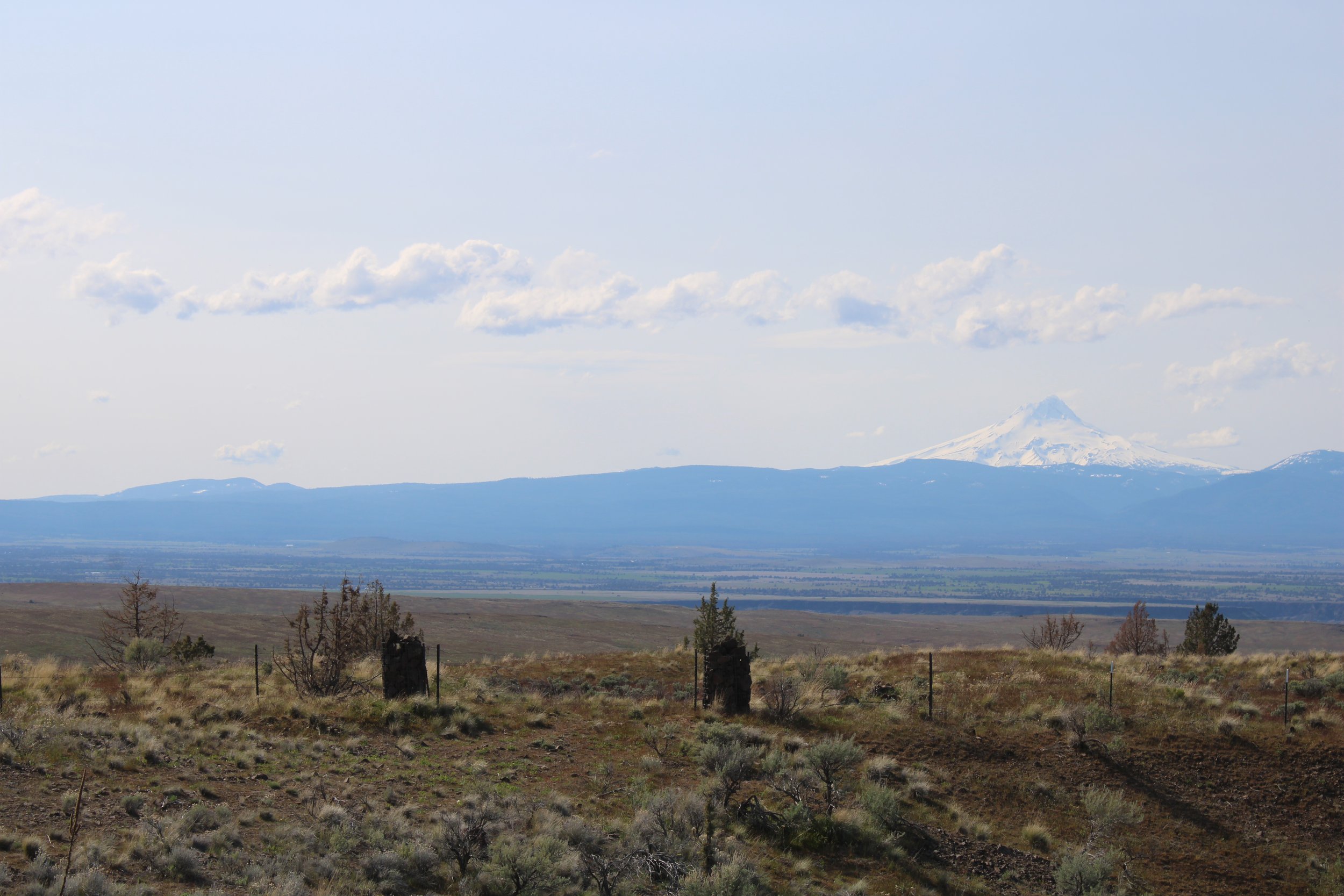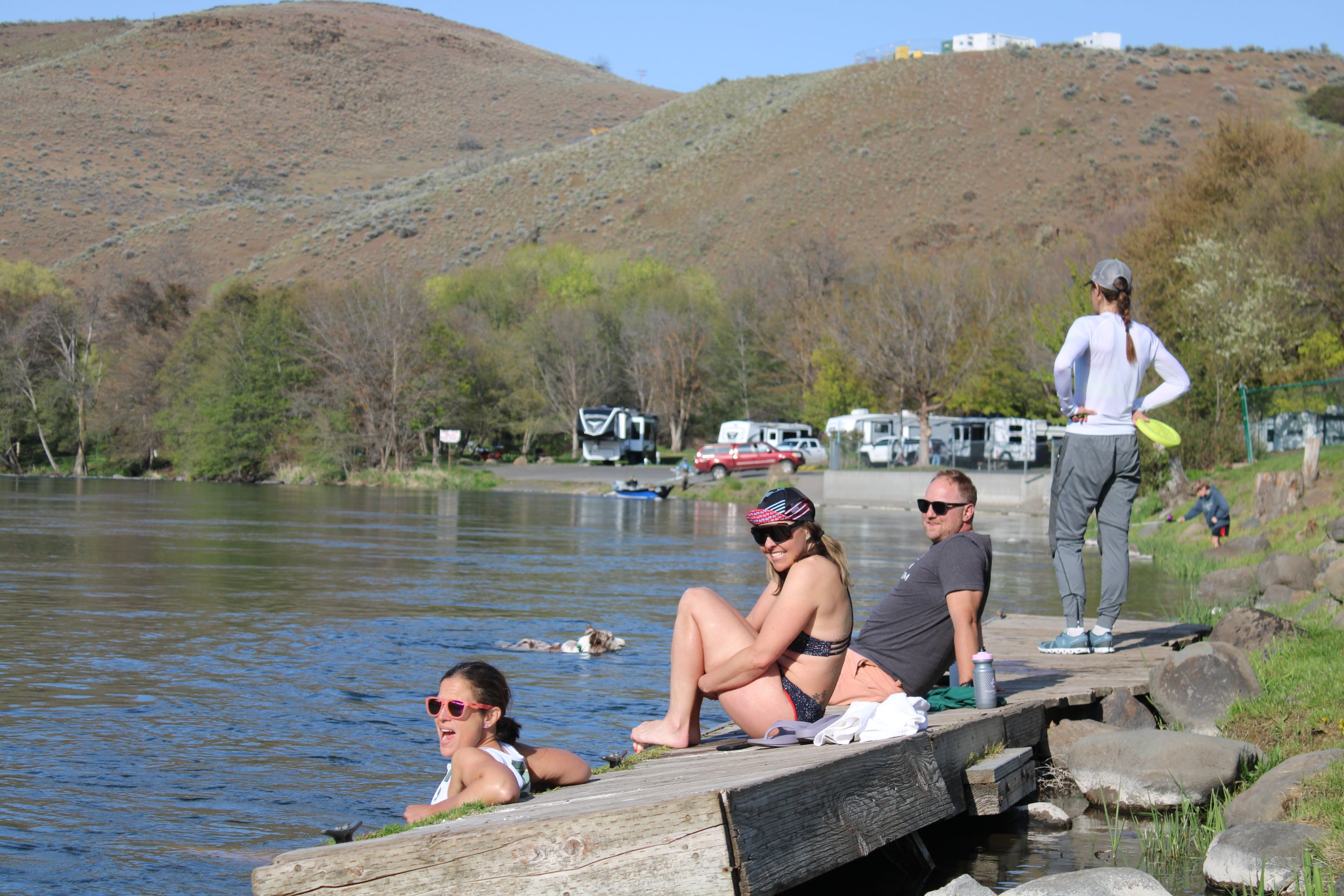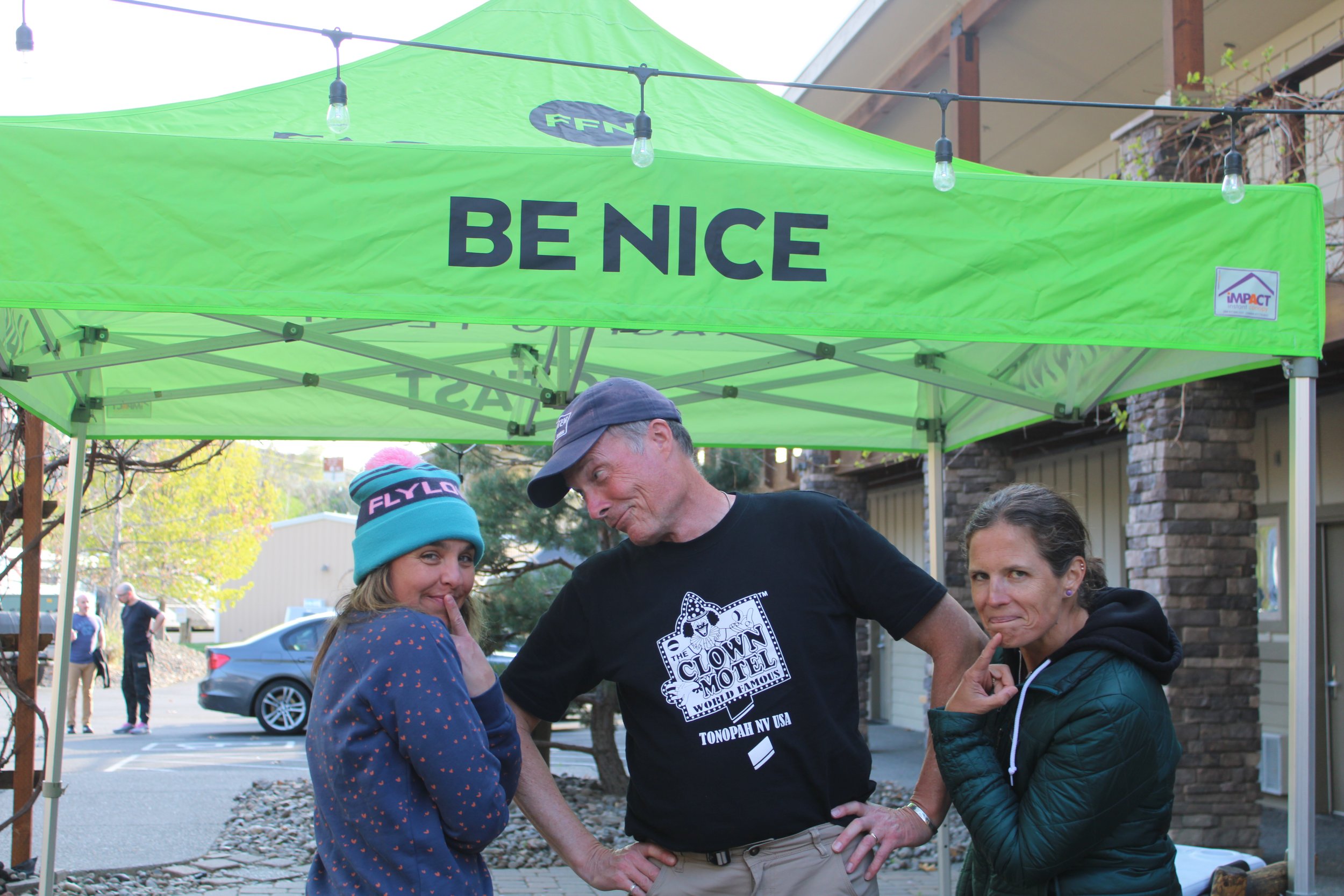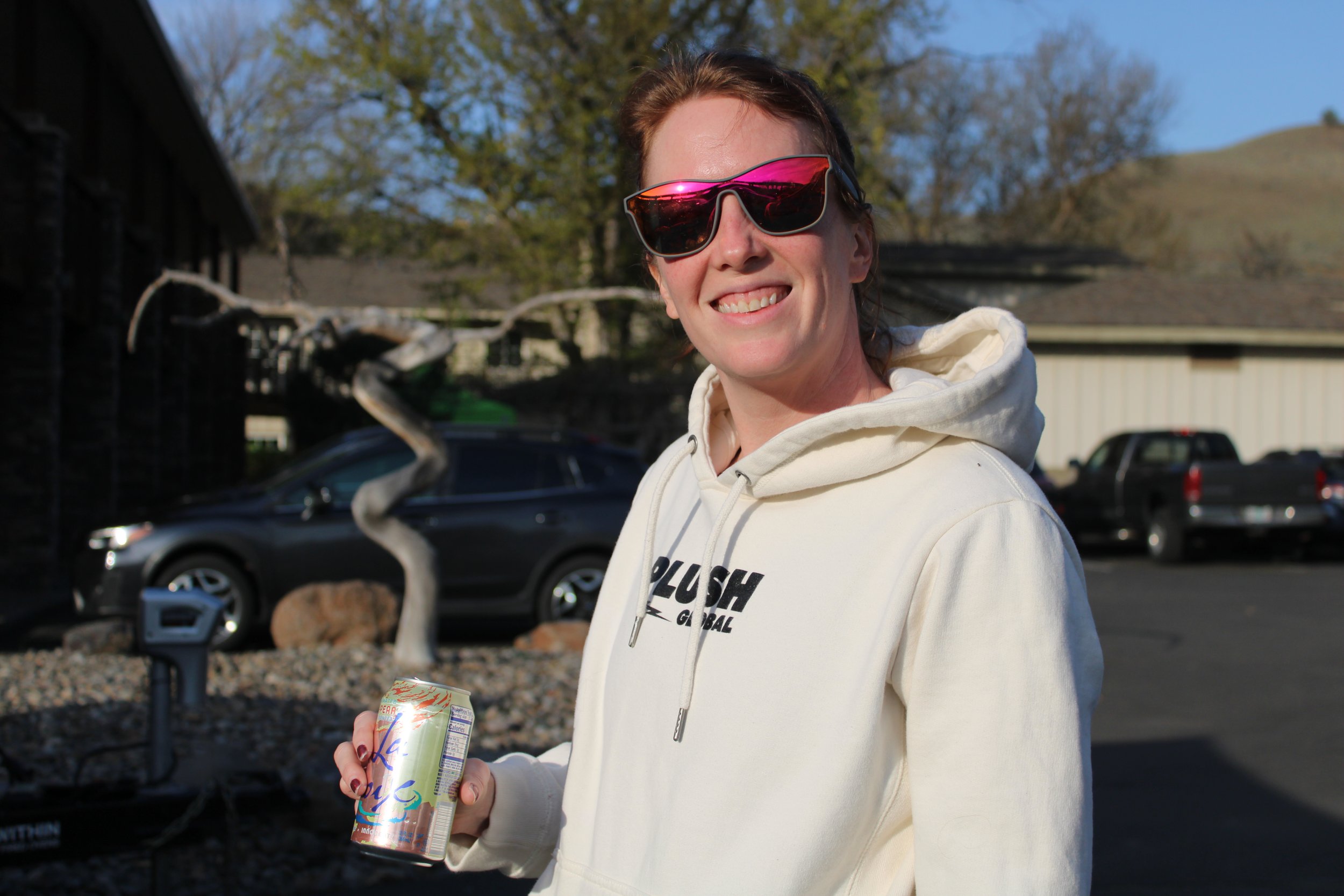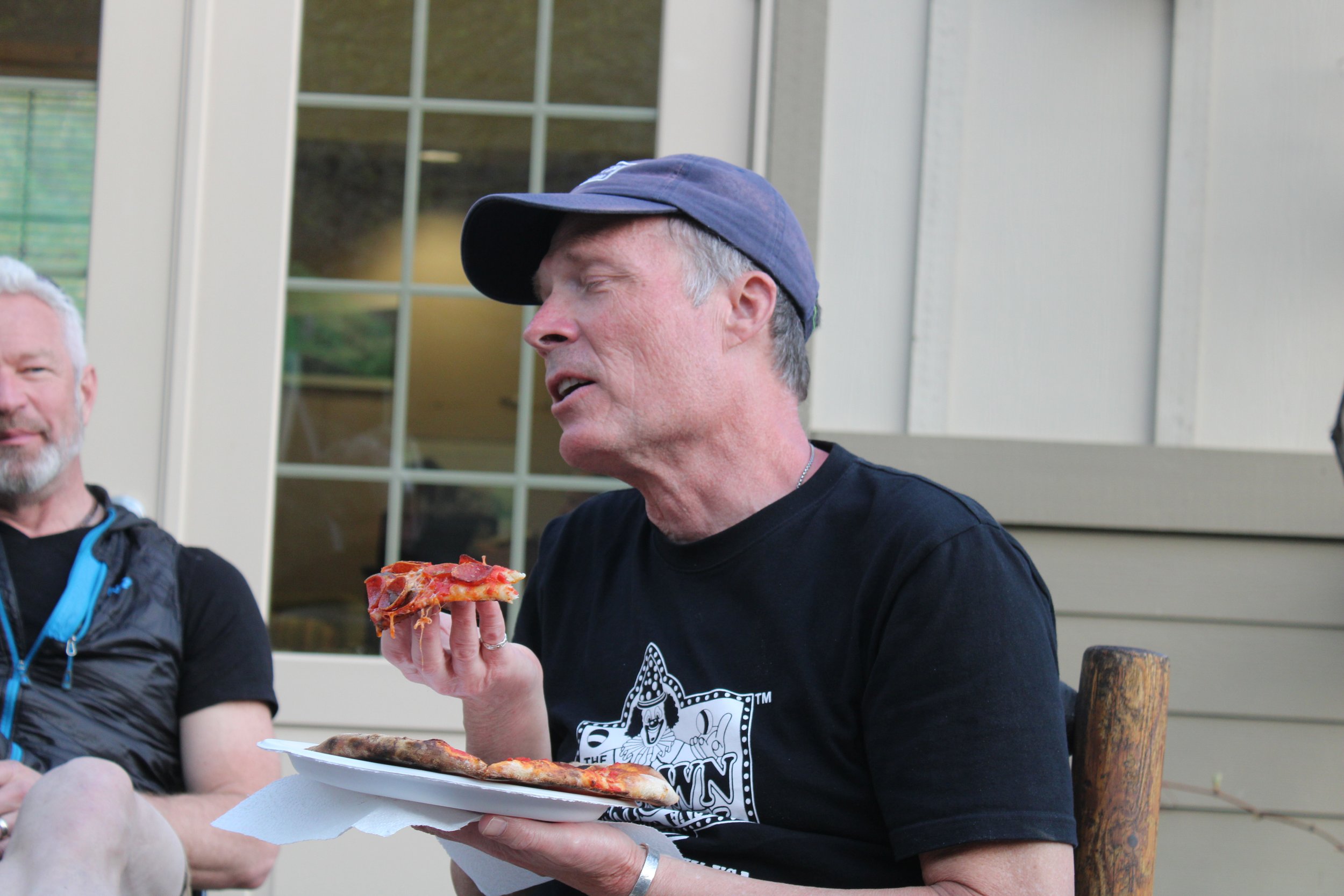How Two Days of Time Trialing Will Make you a Better Cyclist
by Campfire Head Coaches Molly Balfe and Chris Bagg
Putting in the work at the Deschutes River Valley Time Trial Festival
Campfire athlete Jenny G. sets off on stage 3 of the Deschutes River Valley Time Trial Festival
Every April, in a small town in central Oregon, a strange event called the Deschutes River Time Trial Festival takes place, put on by Race Across Oregon. Over the penultimate weekend of the month, athletes participate in three different time trials, those with the lowest aggregate times taking home victory, but this event isn’t about results—it’s about challenge, assessment, and fun. The awards ceremony, MC’d by the race director George Thomas, is a madcap affair with fake rubber checks, mallets, and dollar store prizes curated for each racer. DRVTT is a mixture of mundane suffering on the bike and sublime oddness, all surrounded by the austere beauty of central Oregon. Today we’ll tell you a little bit about George, the race director, check in with head coach Molly Balfe about her return to DRVTT, and then assess the benefits of this kind of event for all athletes: triathletes and cyclists alike.
George Thomas, RAAM-finisher, former RAAM race director, DRVTT and RAO director, podcast host…so many things!
A history of overcoming
George Thomas is a unique individual among unique individuals. In the late 1980s he was hit by a vehicle and tossed a few hundred feet through the air. Told he’d never walk again he said “hold my beer” and not only returned to walking but also to riding his bike. No stranger to setback, he developed another complication from the crash that forced him to stop riding for a few years. Depressed and trying to figure out what would come next, the cycling and downhill skiing great volunteered for an experimental treatment that worked, allowing him to return to riding. George doesn’t do things in halves, so he took his return to riding like a matador, signing up for a four-person Race Across America team. “That felt like cheating,” he says, “so the next two years I did it solo.” Still looking to increase his personal adversity, George spent the next two years doing RAAM on a tandem. Yup, you read that right. 13-15 days of staring at someone else’s butt while you hallucinate the weasels from Who Framed Roger Rabbit chasing you through the Nebraska cornfields, pointing at you and laughing (true story—ask George).
After his 5th RAAM, George directed the race for several editions before becoming the finish line announcer and race director emeritus. He began his own race series in Oregon, Race Across Oregon (RAO), which included quirky relay time-trials across the state, often in the Maupin area. DRVTT remains one of his more popular and visible events, due to the large number of triathletes and cyclists who view it as a great training weekend, but RAO also puts on 12- and 24-hour time trial races (The Ring of Fire), double centuries, and several other excellent cycling events. A true renaissance man, in the winter George pursues “his first love,” which is coaching and teaching alpine skiing in the mountains of Colorado and Oregon.
“I don’t want my events to get too big,” George says, “because I want to be able to remember everyone’s name at the award ceremony.” No slouch on the bike himself, George has logged hundreds of thousands of miles on the roads around Maupin, Oregon, and Nederland, Colorado, and is planning to return to RAAM as an athlete next year. His only caveat? He has to get ahead of the solo riders so he can be on time to announce the finish line in Annapolis, Maryland.
Our narrator, unhappy about number placement
The Athlete’s Perspective
This weekend I returned to Maupin for my second Deschutes River Valley Time Trial Festival. DRVTT holds a special place in my race season because of the beautiful scenery, the strong community, and the heaping dose of early season humility that it piles on my plate. I have a lot of gratitude for the work that George Thomas puts in to ensure that athletes have the chance to race three challenging stages in his RAAM training grounds. It is a perfect chance to test your early season legs on beautiful road and seemingly endless climbs.
Some things come naturally to me. I’m pretty good at math, I’m a decent swimmer, and I will challenge you to a karaoke battle any day. Cycling is not one of those things. The gains that I’ve made over the past few decades in the sport have come from lots of work, and all that work has put me squarely in the middle of the field at most triathlons. This year, in an attempt to change that, I’ve been doubling down on bike volume to hopefully make some gains in speed and strength. The progress is slower than I’d like (right?), but it is happening. Races like DRVTT are a perfect way to gauge improvement and see what those hours on the trainer have wrought. This year I’m a little faster! No one is going to mistake me for Marianne Vos anytime soon, but improvement is definitely there.
There is a real beauty in inviting yourself to places where you feel like you don’t belong. Last year I had no idea what to expect and I barely knew anyone who would be racing. I worried about doing the wrong thing and looking like a dork in an environment that holds both my business and much of my social circle. I also worried I’d get my ass kicked by all the fast ladies. It turned out I didn’t need to worry about any of that; I absolutely did things wrong, looked like a dork, and got my ass kicked by the fast ladies. I also walked away with new friendships and a whole lot more confidence. Racing like this isn’t about what you look like or where you land, it is about how willing you are to test yourself. There is a place for everyone who is brave enough to show up.
Doing something you’re bad at is awesome. So many athletes sign up for races that will feature their strengths or showcase their talents, but there is so much freedom in taking on big challenges that are outside your comfort zone (I’m looking at you, gravel bike). The events that stand out most in my mind aren’t necessarily my fastest races, they’re the ones that tested me and showed me how capable I am. They gave me the stories I tell and many of the people I tell them to. Take some pressure off your performance and sign up for that thing you’ve been wanting to do! Make mistakes. Look like a dork. Get your ass kicked.
Maupin’s surroundings can make a bigger-picture view easier
A Coach’s Perspective
DRVTT’s format seems built for a coach. Athletes take part in three different time trials, each hitting a different energy system and making different demands upon an athlete. The accumulated stress from the weekend (3-6 hours of near maximal riding) makes for a huge dose of effective training, and Saturday in particular is difficult, with two near-threshold efforts coming only a few hours apart. Here’s a quick breakdown, and why this race is such a great stimulus for triathletes and cyclists alike.
Stage One—26 miles, rolling
Stage One (as every stage at DRVTT does) starts with a three mile climb. That’s just what you get in Maupin as you climb out of the Deschutes Canyon. After summiting that initial climb, stage one deals with flat but windy terrain, technical and steep descending, and then a long false-flat drag through the canyon, very often into a headwind. Stage One takes most participants 60-90 minutes to complete, and provides coaches with a sense of what an athlete’s just-slightly-sub-threshold capacity is. Due to the rolling nature, averaging near threshold power or HR is difficult on this course, but you will get a real sense of your 60-90’ mean maximal power, which is a nice warmup for…
Stage two—8 miles, all uphill
…Stage Two, which is this coach’s least favorite stage. Stage two takes most athletes between 30 and 60 minutes, and gives that athlete’s coach a sense of an athlete’s true threshold power. The climb doesn’t relent on its eight mile journey, peaking on the eastern plateau of the Central Oregon landscape. Coming on the heels of stage one, your athlete will get a real sense of how they manage fatigue, and how their habits around fueling, hydration, and recovery serve them (or don’t serve them!).
Stage Three—46 miles, out-and-back
Stage Three is the nail in the coffin for your energy. Tired from the repeated efforts of day two, you put your fatigue resistance to the test in a 46-mile out-and-back that includes several long climbs, and then (typically) a head wind on the way back to town (so cruel). Newer athletes thinking that the course gets easier after the turnaround will be disappointed, as the return trip somehow can feel harder than the outbound leg (if that’s the case, perhaps your pacing needs work…). Stage Three tests an athlete’s speed, durability, climbing strength, endurance, and their self-care. If you haven’t been eating steadily all weekend, you’re going to suffer today.
Recovering from Stage Two in the “Refreshing” Deschutes
A Community Event
But the real gold of DRVTT is the community. From George’s antics to the hospitality of Rob and Suzie Miles, owners of the host hotel Imperial River Company, this race offers friendship and fun and camaraderie hard to find anywhere else. You live and suffer together for two straight days, finally gathering on the IRC’s outdoor patio for George’s amazing award ceremony. Here are some images of Campfire athletes from the 2022 edition, and we’re already making plans for a return in 2023. Thank you, George!
George et al mugging for the camera
Campfire athlete Mo C., stoked to be here
Local food carts supply meals
Campfire athlete Kirby A., reconnoitering the course for 2023
Head Coach Molly enjoying some well-deserved sun in Central Oregon
The pizza (and the race) really is this good
Every athlete gets a TT-hold to start (and jokes abound)
We’ll see you in 2023! Start making plans now for the end of April, 2023!

